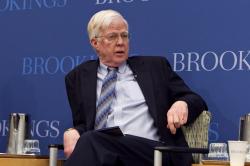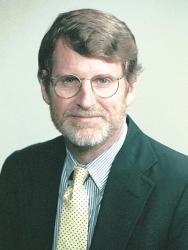Abstract
Recessions affect the timing of retirement through two channels, a weaker job market and losses
in household wealth. The two phenomena have opposite effects. A weaker economy causes
employers to increase permanent job separations and reduce new hires, accelerating retirements
that would otherwise have occurred later. Falling household wealth reduces the resources
available to pay for retirement, discouraging older workers from leaving the workforce. We use
aggregate and micro-census data on old-age labor supply as well as time series data on
unemployment, stock and bond returns, and house appreciation to estimate business cycle effects
on Social Security benefit acceptance and labor force exit. Trailing real stock and bond returns
and house price appreciation have statistically significant but very small effects on old-age labor
force participation. High prime-age unemployment has only a small impact on benefit
acceptance and labor force participation among older women, but the effects on older men are
greater. We estimate that the 4.6 percentage-point increase in prime-age unemployment between
2007 and 2009 reduced the participation rate of 60-74 year-old men by between 0.8 and 1.7
percentage points. This effect has offset the impact of declining household wealth on old-age
labor force participation.
Executive Summary
A recession can affect the timing of retirement through two channels, a weaker job market and lower
household wealth. The two phenomena have opposite effects. Lower aggregate demand increases the pressure on employers to dismiss workers, both young and old, and it reduces the number of new job openings, making it harder for the unemployed to find a job. On the other hand, a fall in household wealth, caused by declines in asset prices, may induce some older workers to postpone retirement and others to return to the labor force.
Our paper analyzes the competing effects of a weaker job market and falling asset values on retirement in a recession. We examine the impact of the business cycle on the take-up of Social Security retired-worker benefits and old-age labor force participation and employment rates using a combination of aggregate time series data and micro-census data on workers’ labor force attachment. The information about benefit take-up is derived from annual Social Security Administration (SSA) data on new retired-worker awards and the size of the Social-Security-insured population over the period from 1971 to 2009. Information on older Americans’ labor force attachment is obtained from published BLS time series data and from our own analysis of public-use versions of annual and monthly Current Population Survey (CPS) files covering the period from 1976-2010.
There are important differences between benefit take-up and labor force participation decisions, of course. A worker’s decision to apply for a Social Security pension cannot be treated as synonymous with the decision to retire. Some workers may plan for gradual retirement from full-time work and combine Social Security benefit acceptance with earnings from a full- or part-time job. The decision to apply for Social Security benefits may be a suggestive indicator of retirement, but it is an imperfect indicator of both employment status and retirement. After their 62nd birthday U.S. workers are free to apply for Social Security retired-worker benefits. It is unclear, however, whether a person collecting retired-worker benefits is in fact retired. In the March CPS interviews for 2000-2009, slightly more than one-fifth of workers aged 62-69 who reported receiving Social Security benefits in the previous year also describe themselves as in the labor force in the March reference week. Among 62-69 year-olds who participate in two consecutive March surveys, 23 percent of those who report receiving Social Security benefits in the first of the two interview years also report working more than 13 weeks in the second interview year. That is, almost a quarter of the 62-69 year-old respondents who collected Social Security benefits in one calendar year reported substantial amounts of paid employment in the following calendar year.
Our analysis of the time-series and micro-census data on retired-worker benefit acceptance and labor force attachment in old age produced a number of findings.
We estimated a set of simple regressions that relate the administrative estimates of new retired-worker award rates to the current and lagged unemployment rate of 25-54 year-olds. We obtained separate estimates for male and female insured workers and for both sexes combined. The impact of a higher unemployment rate on new retired-worker awards for 62-69 year-old men is positive and statistically significant, though the initial effect of a jump in unemployment is partially reversed in the second year. In contrast, a higher prime-age unemployment rate reduces the fraction of insured 62-69 year-old women who claim retired worker benefits, and this effect is marginally significant. For both sexes combined the estimated impact of higher unemployment on benefit claiming in the 62-69 year-old is negligible.
- We do, however, find a noticeable impact of higher unemployment on new benefit awards to
people who have just attained the early entitlement age (62). Our estimates for the combined
male and female caseload suggest that a 1-percentage-point rise in the prime-age unemployment
rate would increase the number of Old-Age Insurance (OAI) awards made to 62-year-olds by
0.7 percent of the number of Social-Security-insured workers who are that age. Part of the in-
crease is reversed if the rise in unemployment is sustained for another year. The two-year effect
on early benefit claiming is about 0.4 percent of the number of insured 62-year-old workers. Be-
tween 2007 and 2009 the prime-age unemployment rate increased 4.6 percentage points. If this
increase were sustained through 2010, our time-series results imply that new OAI awards to
62-year-old workers will be 4.5 percent higher in 2010 than would have been the case if the un-
employment rate had remained unchanged after 2007. The effects of a sustained unemployment
increase are considerably larger for 62-year-old men than for women the same age. - Overall these results suggest there is a modest business cycle impact on retired-worker claiming
behaviorWhile the response of workers at age 62 is statistically significant and substantial, the
lack of a significant impact on 62-64 year-old women and offsetting responses at the oldest claiming ages result in a weak overall impact.
While there is clear evidence of a business cycle effecton new awards to 62-64 year-olds, the effect is quantitatively small except among 62- and
63-year-old men. - We performed two kinds of analysis of business cycle effects on the labor force attachment of older age groups. The first is based on aggregate monthly time series analysis of labor force participation and employment rates within three age groups – 55-59, 60-64, and 65-69 year-olds – and further subdivided into male and female subgroups. We estimated statistical models of the joint effect on labor force status of the current and lagged prime-age unemployment rate, the three-year trailing real return on U.S. stocks and bonds, and the trailing real rate of house price appreciation.
- We found little evidence that the prime-age unemployment rate affects the labor force participation decisions of older women. The contemporaneous and lagged values of unemployment are never jointly significant. Moreover, the sum of the coefficients on the current and lagged unemployment terms is always close to zero.
- The participation rate of men who are between 55 and 59 shows little responsiveness to the unemployment rate. However, among 60-64 year-old men the participation rate drops between 0.2 and 0.3 percentage points in response to a 1-point rise in the jobless rate. Among 65-69 year-old men, the estimated drop in participation ranges between 0.2 and 0.5 percentage points depending on the other variables included in the model. In the recent recession the prime-age unemployment rate increased 4.6 percentage points. Our results for men imply that this increase could have reduced the labor force participation rate by 0.8 to 1.5 percentage points among 60-64 year-old men and by 0.8 to 2.3 percentage points among 65-69 year-old men.
- The impacts of both stock and bond returns on women’s labor force status are in the expected direction, but the effects are small. For example, a one-standard-deviation (10.1-percentage-point) increase in the trailing real return on stocks would only reduce 55-59 year-olds’ participation rate by 0.4 percentage points, or about 1.1 percent of the average participation rate in the estimation period. The proportional effects (though not the absolute effects) on the participation and employment rates are larger for women in the older age groups. This may either mean that women are more sensitive to wealth changes as they grow older or that stock and bond holdings are larger and more important among women who remain in the workforce after age 60 or 65.
- The estimated effects of increased stock and bond returns on older men are usually in the expected direction, but similar to the results for women they suggest quantitatively small responses to increases or reductions in the trailing real return. For example, a 1-standard-deviation increase in the real return on stocks is predicted to reduce the labor force participation rate of 60-64 year-old and 65-69 year-old men by 0.2 to 0.3 percentage points.
- The aggregate time series analysis produced one puzzling effect. For both men and women past age 60 we find that an increase in house appreciation is associated with a small increase in labor force participation. However, this finding is reversed in our analysis of micro-census files, where we can use state-level rather than national-level estimates of house prices to measure the rate of house price appreciation.
- Our second analysis of labor force attachment is based micro-census records derived from monthly CPS files.We predicted older individuals’ labor force participation using the linear probability model. The determinants of participation include the national-level prime-age unemployment rate, the difference between the state- and national-level unemployment rate, the trailing real returns on stocks and bonds, and the trailing rate of house appreciation in the individual’s state. In addition, the prediction model includes indicator variables reflecting each respondent’s state of residence, race, educational attainment, marital status, and exact year of age plus a common cubic time trend and indicator variables for each month to capture seasonal effects.
- The results for older women uniformly show a quantitatively small and statistically insignificant impact of the unemployment rate on labor force participation. In contrast, higher national and state unemployment rates tend to reduce labor force participation among older men, and the effect is progressively larger at more advanced ages. A 1-percentage point increase in the prime-age national unemployment rate is estimated to reduce the participation rate of 60-74 year-old men by between 0.3 and 0.4 percentage points. By implication, the 4.6 percentage-point jump in the unemployment rate in 2008 and 2009 may have reduced the participation rate in these age groups by 1.3 to 1.7 percentage points. These estimated effects are close to the ones obtained in our aggregate time series analysis.
- The estimated effects of trailing real stock and bond returns and home price appreciation on older women’s participation rates usually have the expected sign, but the impacts are typically small. A partial exception is the response of 60-64 year-old women to trailing stock returns and 65-69 year-old women to both stock and bond returns. A one-standard-deviation increase in the trailing bond return is estimated to reduce the participation rate of 65-69 year-old women by 0.4 percentage points. Although this is a small absolute effect, it is about 2 percent of the average labor force participation rate of women in the age group. A 1-standard-deviation increase in the trailing stock return would reduce the participation rate of women in this age group by a similar absolute and proportional amount. Thus, there is some evidence that women near the normal retirement age are modestly sensitive to stock and bond returns. The results for older men show smaller and less consistent effects of trailing returns on participation rates. The effects of house price appreciation on the labor force participation of older men and women have the anticipated sign, but they are quantitatively small.
In sum, our findings suggest that, with few exceptions, the effects of trailing real returns on participation and employment rates are typically quite modest, even when the effects are statistically significant and precisely estimated. Some of the most consistent results show small effects of trailing stock and bond returns on women’s and older men’s participation and employment rates. As most economists would anticipate, higher real returns on assets, which tend to boost the value of retirement savings, typically push down the labor force participation and employment rates of older men and women. The size of this effect, however, is quantitatively very modest. We find essentially no evidence that fluctuations in the prime-age unemployment rate have an important or systematic effect on the labor force participation rates of women past age 55. In contrast, the prime-age unemployment rate has a significant, though not a particularly large, impact on the participation rate of older men. For men between 55 and 59, there is little evidence that weak job markets drive large numbers of men from the work force. There is, of course, good evidence that weak job markets reduce the employment rates of older men. Just as men in younger age groups lose their jobs and suffer high unemployment when the job market is weak, so, too, do men in older age groups. At ages past 60 and especially past 65, however, the reduced employment
levels caused by a weak job market very quickly translate into reduced labor force participation rates.
The Brookings Institution is committed to quality, independence, and impact.
We are supported by a diverse array of funders. In line with our values and policies, each Brookings publication represents the sole views of its author(s).




